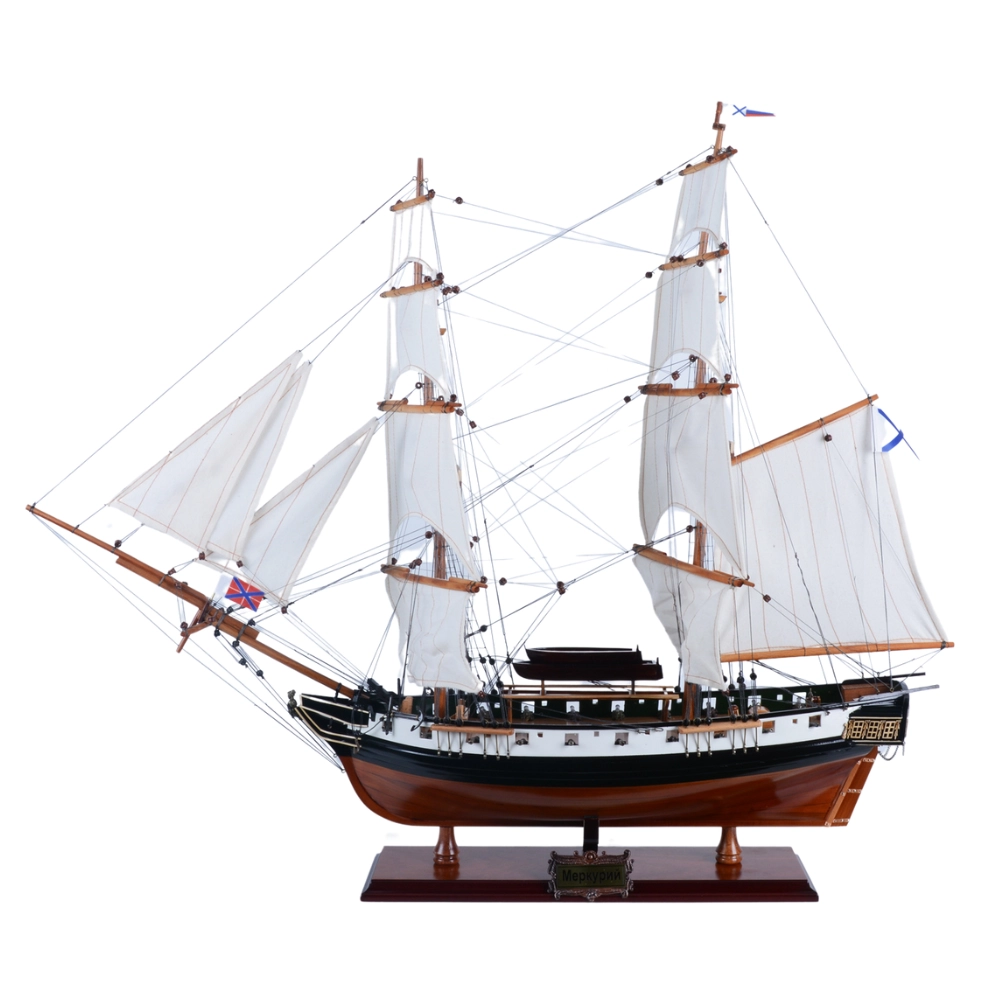Description:
Drawing inspiration from the rich legacy of British naval history, the Mercury stands as a testament to the age of sail. This model echoes the elegance and agility of 19th-century vessels that once patrolled the seas under the Union Flag, symbolizing both power and exploration.
Handcrafted from a premium blend of cedar wood, mahogany, teak, and other exotic woods, each Mercury Painted model is built using the time-honored plank-on-frame method—just like a real ship. Skilled artisans devote hundreds of hours to carefully shape, paint, and assemble every component.
Details:
- Three-Masted Rig: The Mercury Painted features three wooden masts, each rigged with cream-colored linen sails and an intricate network of ropes and pulleys for an authentic tall ship look.
- Striking Hull & Color Scheme: A deep red lower hull transitions to a sleek black upper section, highlighted by a subtle white stripe and gold accents around the stern, echoing classic British naval styling.
- Deck & Flag Details: The deck showcases finely crafted railings, a helm, and various ornamental fittings. A British flag near the stern pays homage to the vessel’s heritage, adding a touch of historical authenticity.
- Base & Presentation: Mounted on a polished wooden stand with a brass nameplate reading “Mercury,” the model exudes a refined aesthetic, making it a captivating centerpiece for any display.
Ideal for display in living rooms, offices, libraries, or maritime-themed spaces, this model adds a distinguished touch to any setting. Collectors and naval history enthusiasts alike will appreciate its detailed craftsmanship and the nod to Britain’s storied seafaring heritage.
Celebrate the spirit of the high seas—order your Mercury Painted today and bring a piece of Britain’s illustrious naval tradition into your own space!
History:
The Mercury was a famous and groundbreaking ship that played an essential role in the early days of space exploration. However, it's often confused with the USS Mercury, a United States Navy vessel, or the Mercury spacecraft. To clarify, we will focus on the Mercury spacecraft, which was part of the Project Mercury program in the early 1960s.
The Mercury spacecraft was the first manned space program by the United States, designed to put a human into orbit around Earth and safely return them. The first successful flight was carried out by Alan Shepard on May 5, 1961, aboard Freedom 7. This marked the U.S.'s entry into the space race against the Soviet Union, which had already launched its first satellite, Sputnik, and its first human cosmonaut, Yuri Gagarin.
The Mercury project laid the foundation for future U.S. space exploration efforts, including the Apollo moon landings. The Mercury capsule itself was small, designed to carry one astronaut, and was equipped with essential controls for piloting and re-entry. Over six successful flights between 1961 and 1963, the Mercury spacecraft proved essential for understanding human capabilities in space, paving the way for more complex missions in the years that followed.
After its conclusion, the Mercury program was succeeded by Gemini and then Apollo programs, but the legacy of the Mercury spacecraft continues to be celebrated in U.S. space history. The spacecraft itself is now preserved in museums across the country, standing as a testament to early space exploration.



